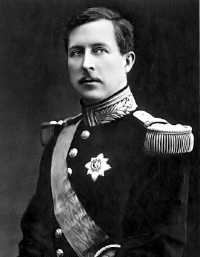 SKC Films Library |
| SKC Films Library >> General and Old World History >> Low Countries >> Belgium >> 20th Century |
| Albert I King of Belgium, 1909-1934
Albert Léopold Clément Marie Meinrad was born in Brussels on April 8, 1875, the fifth child and second son of Prince Philippe, Count of Flanders, and Princess Marie of Hohenzollern-Sigmaringen. He grew up in the Palace of Flanders as fourth in the line of succession to the throne. When, however, the only legitimate son of his uncle, King Leopold II, died as a child and Albert's older brother, Prince Baudouin, also died young, Prince Albert became second in line, after his father. He became first in line following the death of his father in 1905. Seriously concerned with the situation of the working classes in Belgium, Prince Albert personally traveled around working class districts incognito to observe the living conditions of the people. Shortly before his accession to the throne in 1909, he undertook an extensive tour of the Belgian Congo, which had been annexed by Belgium in 1908 (after having been previously owned by King Leopold II of Belgium as his personal property), and found the area in poor condition. Upon his return to Belgium, he recommended reforms to protect the native population and to further technological progress in the colony. On October 2, 1900, Prince Albert married Duchess Elisabeth Gabrielle Valérie Marie, a daughter of Karl-Theodor, Duke of Bavaria, and Maria Josepha of Portugal. The couple ultimately had three children -- Léopold Philippe Charles Albert Meinrad Hubertus Marie Miguel (November 3, 1901-September 25, 1983) succeeded his father as King Leopold III; Charles-Théodore Henri Antoine Meinrad (October 10, 1903-June 1, 1983); and Marie-José Charlotte Sophie Amélie Henriette Gabrielle (August 4, 1906-January 27, 2001) married Umberto Nicola Tommaso Giovanni Maria, Prince of Piemonte, who became King Umberto II of Italy. Reign Leopold II died on December 17, 1909, and Albert was formally crowned King Albert I on December 23. All previous Belgian kings had taken the royal oath only in French, but Albert broke tradition by also taking it in Dutch. The most notable achievement of his early years on the throne was to institute the majority of reforms he had recommended for the Belgian Congo Because Belgium occupied the only open tract of land between France and Germany, its stance as a neutral power was key to the balance of power in pre-war Europe. On August 2, 1914, Germany demanded that Belgium allow German forces access to its territory so that Germany could gain ready access to French borders. Albert I resisted the demand and, expecting German retaliation, took personal charge of the Belgian Army. Germany invaded Belgium on August 4, 1914, quickly overrunning the country's small army (consisting of 43,000 men in 1914, with 115,000 reserve troops) and forcing Albert I to move the Belgian government to Le Havre from where he continued to govern his nation (although he himself continued to live in Belgium, first in De Panne and then in Kasteel De Moeren). During this period, King Albert fought with his troops and shared their dangers, while his wife, Queen Elisabeth, worked as a nurse at the front. The King also allowed his 14-year-old son, Prince Leopold, to enlist in the Belgian Army as a private and fight in the ranks. In the autumn of 1918, as commander of the Army Group Flanders, consisting of Belgian, British and French divisions, Albert led the final offensive of the war that liberated occupied Belgium. On November 22, 1918, King Albert, Queen Elisabeth, and their children re-entered Brussels to a hero's welcome. After the war, King Albert took an active part in the industrial reconstruction of Belgium, the "centerpiece" of which was the Albert Canal linking Liege with Antwerp. He also introduced constitutional reform that gave equal rights to Flemish citizens. On February 17, 1934, King Albert I died in a mountaineering accident while climbing alone on the Roche du Vieux Bon Dieu at Marche-les-Dames, in the Ardennes region of Belgium near Namur. He is interred in the Royal Crypt at the Church of Our Lady in Laeken, Brussels. SEE ALSO |
| SKC Films Library >> General and Old
World History >> Low Countries >> Belgium >> 20th Century This page was last updated on February 16, 2018. |
